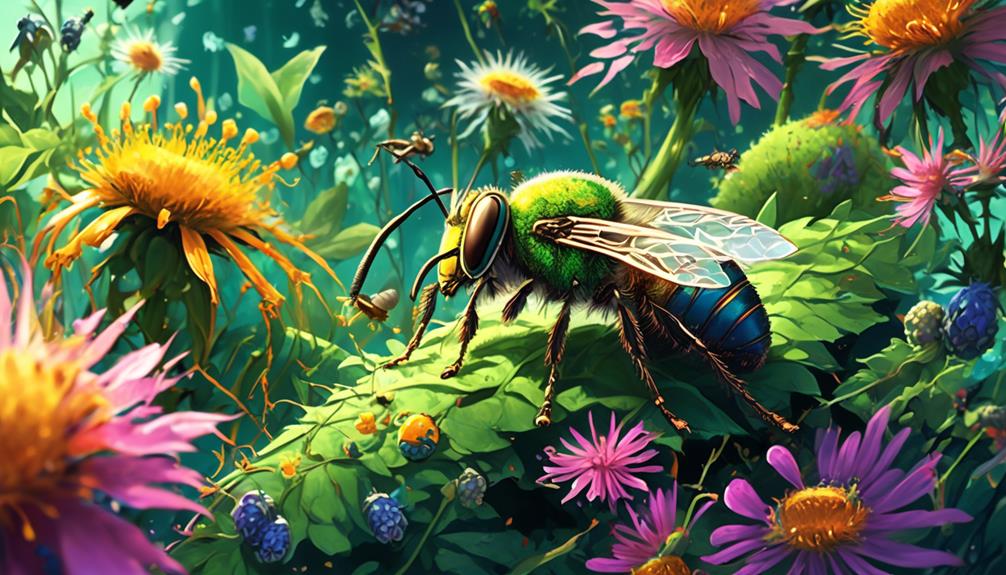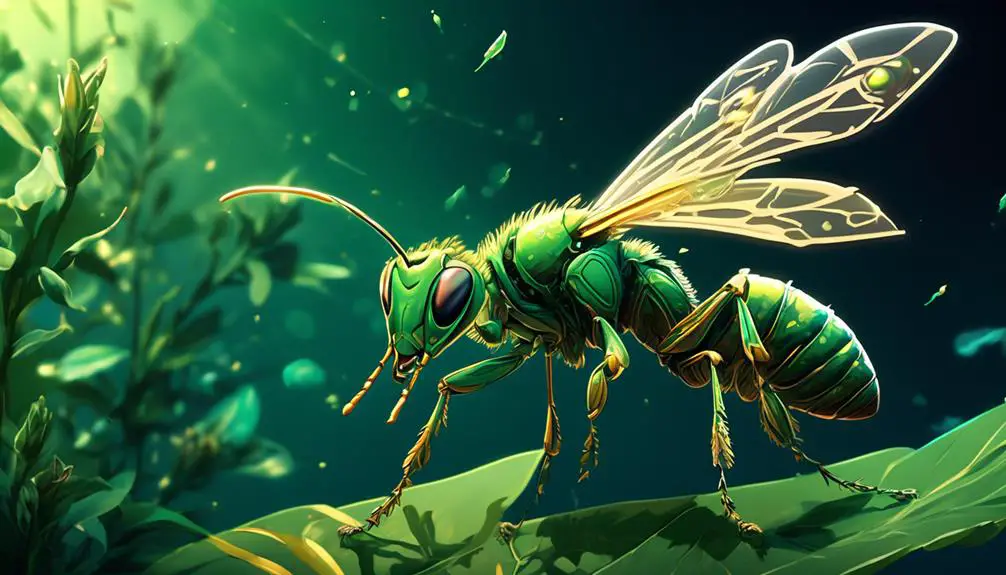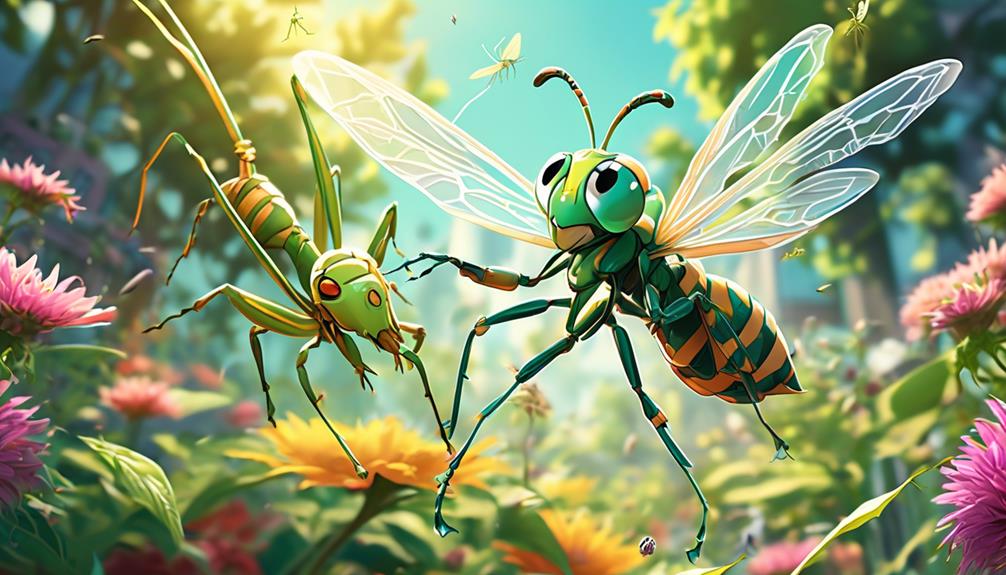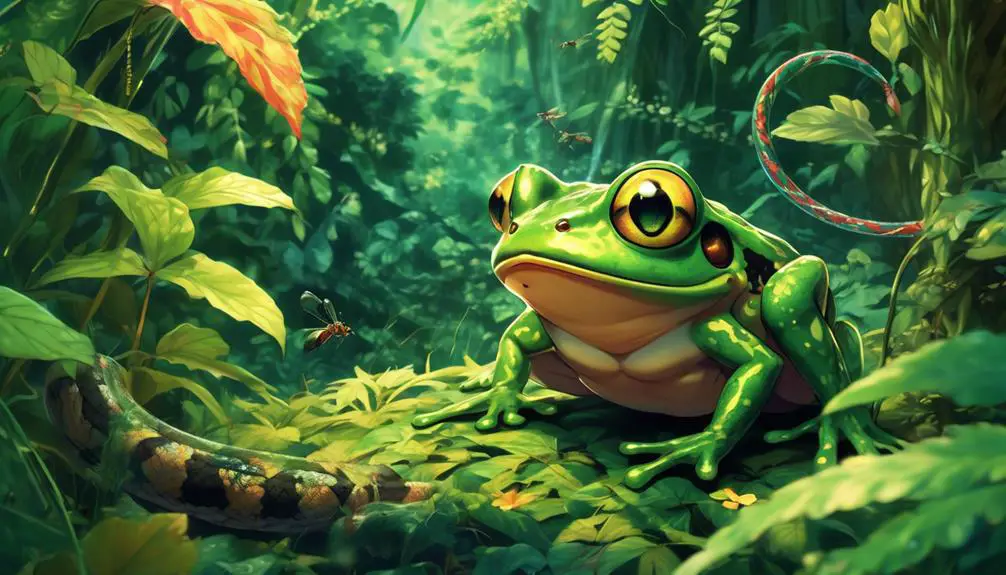Admire the fascinating world of sweat bees and their unexpected predators, in an ecosystem teetering on the brink of change.

What Are Sweat Bees Predators
Did you know that there are approximately 1000 species of sweat bees in the United States alone? That's a staggering number, isn't it?
But as you marvel at this diversity, you might also begin to wonder about the threats these tiny creatures face in their day-to-day lives. Who, or what, are the predators of these sweat bees?
Well, it's a fascinating mix of creatures, from birds to insects and even certain types of amphibians. Let's explore the various predators of sweat bees, and how this influences their behavior.
Key Takeaways
- Sweat bees face threats from a variety of sources, including larger predators, parasites, habitat destruction, and climate change.
- Birds play a significant role as predators of sweat bees, utilizing unique hunting techniques to capture them.
- Insects and arachnids such as dragonflies, praying mantises, and spiders are also predators of sweat bees, using different hunting techniques to catch them.
- Amphibians and reptiles like frogs, toads, and lizards pose a danger to sweat bees, using their quick reflexes and sharp eyesight to hunt them.
Understanding Sweat Bees

Diving into the world of sweat bees, you'll find these small insects to be fascinating, not just for their unusual attraction to human sweat, but also for their unique role in the ecosystem. They're not your typical bees. They're smaller, less aggressive, and, unlike honeybees, they're solitary creatures. Each female sweat bee builds her own nest, where she lays her eggs.
You're probably wondering why they're called sweat bees. They've earned this name because they're attracted to the salt in human sweat. But don't worry, they're not harmful. Their sting is extremely mild and often, they won't sting unless provoked.
Sweat bees play a crucial role in our ecosystem. They're excellent pollinators, helping plants to reproduce. Without them, we'd have fewer fruits, vegetables, and flowers. They're also a food source for many birds and insects, making them an important part of the food chain.
Predators of Sweat Bees

Now, let's take a look at the creatures that pose a threat to these sweat bees – their predators. You might be surprised to learn that sweat bees face threats from a variety of sources. It's not just the larger, more obvious predators like birds or spiders that they need to worry about.
One of the main threats to sweat bees are other insects. For instance, dragonflies and robber flies are known to prey on these bees. Larger bees also pose a threat, often attacking sweat bee hives to steal their resources.
Another common predator of sweat bees is the parasitic wasp. These wasps lay their eggs inside the sweat bee's nest. When the wasp larvae hatch, they consume the sweat bee larvae, effectively wiping out future generations.
In addition to these insects, sweat bees also have to contend with human threats. Pesticides, habitat destruction, and climate change are all human-induced problems that can decimate sweat bee populations.
The Role of Birds

In the world of sweat bees, birds play a significant role as predators, swooping down to snatch these tiny insects for a quick meal. You might've noticed how birds are always on the lookout, their sharp eyes scanning the environment for potential prey. Well, sweat bees are often on their radar.
The bird species that feed on sweat bees vary widely. From small agile flycatchers to larger, more robust birds like starlings, each has developed their unique hunting technique. Some might dart out from a perch, capturing their meal in mid-air, while others might pick them off plants or the ground.
But why would birds bother with such tiny creatures? It's simple: sweat bees are a reliable and plentiful food source. They're packed with protein and easily accessible. And they're buzzing about in large numbers during the warmer months, making them a choice snack for hungry birds.
You see, it's not just about survival; it's about efficiency. Birds have to conserve their energy. So, if they can get a nutritious meal without expending too much effort, they'll take it. And unfortunately for sweat bees, they're often on the menu.
Impact of Insects and Arachnids

While birds may pose a threat, sweat bees also have to watch their backs for other predators in their own backyard, insects and arachnids. These tiny creatures can be just as deadly to sweat bees, if not more so, because they can infiltrate bee nests with ease.
Insects like dragonflies, praying mantises, and even other bees are known to prey on sweat bees. But it's not just insects you need to think about. Arachnids, especially spiders, are also a major threat.
Here's a quick glimpse of how these predators impact sweat bees:
- Dragonflies are aerial hunters and can catch sweat bees mid-flight. They're quick and have excellent vision, making escape difficult for the bees.
- Praying mantises, with their lightning-fast reflexes, can snatch sweat bees right out of the air.
- Spiders build intricate webs to trap unsuspecting sweat bees. Some spiders are even known to invade sweat bee nests to feed on the larvae.
As you can see, the world of sweat bees is fraught with danger. Every day is a fight for survival, with threats lurking not only in the skies but in their own backyard.
Threats From Amphibians and Reptiles

Beyond the threats posed by insects and arachnids, sweat bees also face danger from amphibians and reptiles. Frogs, toads, and lizards are among their most common predators. These creatures have sharp eyesight and quick reflexes, making them formidable hunters.
Imagine you're a tiny sweat bee, buzzing around a pond. Suddenly, a frog's tongue shoots out, quicker than you can react. It's a deadly game of survival and unfortunately, you're often the prey. Toads, too, are a threat. They're not as fast as frogs, but they're patient and can sit for hours, waiting for a bee to come within range.
Then there are the reptiles. Lizards, in particular, are expert bee-catchers. They're lightning-fast and their stealthy hunting style makes them a serious threat. They can snatch a sweat bee out of the air in a split second.
As a sweat bee, your world is full of danger. Amphibians and reptiles are among the creatures you need to watch out for. Remember, it's not just the big predators you need to worry about. In the world of sweat bees, even the smallest frog can be a deadly enemy.
Conclusion
So, you've learned that sweat bees aren't just buzzing around without any threats. Birds, insects, arachnids, amphibians, and reptiles all fancy these little bees as a meal.
These predators play a crucial role in the ecological balance, keeping sweat bee populations in check.
It's a tough world out there for sweat bees, but as they say, it's all part of the circle of life!



